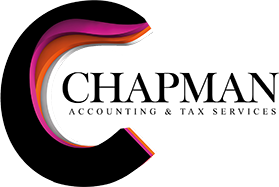Travel expenses are the ordinary and necessary expenses of traveling away from home for your business, profession, or job. You can’t deduct expenses that are lavish or extravagant, or that are for personal purposes.
You’re traveling away from home if your duties require you to be away from the general area of your tax home for a period substantially longer than an ordinary day’s work, and you need to get sleep or rest to meet the demands of your work while away.
Generally, your tax home is the entire city or general area where your main place of business or work is located, regardless of where you maintain your family home. For example, you live with your family in Chicago but work in Milwaukee where you stay in a hotel and eat in restaurants. You return to Chicago every weekend. You may not deduct any of your travel, meals or lodging in Milwaukee because that’s your tax home. Your travel on weekends to your family home in Chicago isn’t for your work, so these expenses are also not deductible. If you regularly work in more than one place, your tax home is the general area where your main place of business or work is located.
In determining your main place of business, take into account the length of time you normally need to spend at each location for business purposes, the degree of business activity in each area, and the relative significance of the financial return from each area. However, the most important consideration is the length of time you spend at each location.
You can deduct travel expenses paid or incurred in connection with a temporary work assignment away from home. However, you can’t deduct travel expenses paid in connection with an indefinite work assignment. Any work assignment in excess of one year is considered indefinite. Also, you may not deduct travel expenses at a work location if you realistically expect that you’ll work there for more than one year, whether or not you actually work there that long. If you realistically expect to work at a temporary location for one year or less, and the expectation changes so that at some point you realistically expect to work there for more than one year, travel expenses become nondeductible when your expectation changes.
Travel expenses for conventions are deductible if you can show that your attendance benefits your trade or business. Special rules apply to conventions held outside the North American area.
Deductible travel expenses while away from home include, but aren’t limited to, the costs of:
Travel by airplane, train, bus or car between your home and your business destination. (If you’re provided with a ticket or you’re riding free as a result of a frequent traveler or similar program, your cost is zero.)
Fares for taxis or other types of transportation between:
The airport or train station and your hotel,
The hotel and the work location of your customers or clients, your business meeting place, or your temporary work location.
Shipping of baggage, and sample or display material between your regular and temporary work locations.
Using your car while at your business destination. You can deduct actual expenses or the standard mileage rate, as well as business-related tolls and parking fees. If you rent a car, you can deduct only the business-use portion for the expenses.
Lodging and non-entertainment-related meals.
Dry cleaning and laundry.
Business calls while on your business trip. (This includes business communications by fax machine or other communication devices.)
Tips you pay for services related to any of these expenses.
Other similar ordinary and necessary expenses related to your business travel. (These expenses might include transportation to and from a business meal, public stenographer’s fees, computer rental fees, and operating and maintaining a house trailer.)
Instead of keeping records of your meal expenses and deducting the actual cost, you can generally use a standard meal allowance, which varies depending on where you travel. The deduction for business meals is generally limited to 50% of the unreimbursed cost. For information on a temporary 100% deduction for food or beverages provided by a restaurant paid or incurred after December 31, 2020, and before January 1, 2023, refer to Notice 2021-25PDF. For more information on a special rule that allows the temporary 100% deduction for the full meal portion of a per diem rate or allowance, refer to Notice 2021-63PDF.
If you’re self-employed, you can deduct travel expenses on Schedule C (Form 1040), Profit or Loss From Business (Sole Proprietorship), or if you’re a farmer, on Schedule F (Form 1040), Profit or Loss From Farming.
If you’re a member of the National Guard or military reserve, you may be able to claim a deduction for unreimbursed travel expenses paid in connection with the performance of services as a reservist that reduces your adjusted gross income. This travel must be overnight and more than 100 miles from your home. Expenses must be ordinary and necessary. This deduction is limited to the regular federal per diem rate (for lodging, meals, and incidental expenses) and the standard mileage rate (for car expenses) plus any parking fees, ferry fees, and tolls. Claim these expenses on Form 2106, Employee Business Expenses and report them on Form 1040 or Form 1040-SR as an adjustment to income.
Good records are essential. Refer to Topic No. 305 for information on recordkeeping. For more information on these and other travel expenses, refer to Publication 463, Travel, Entertainment, Gift, and Car Expenses.

